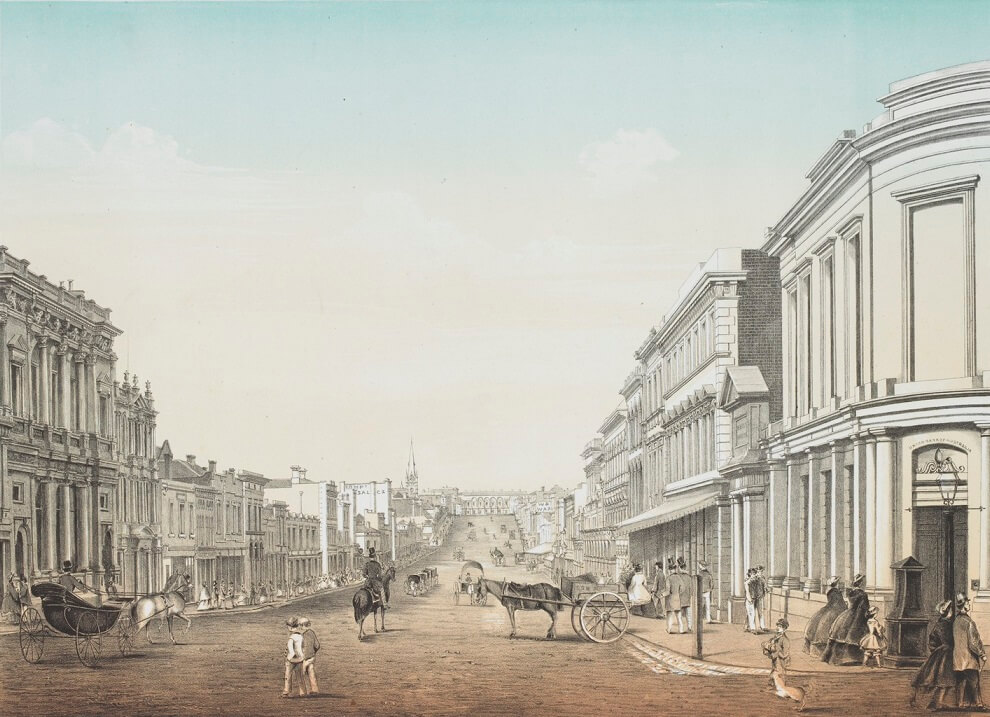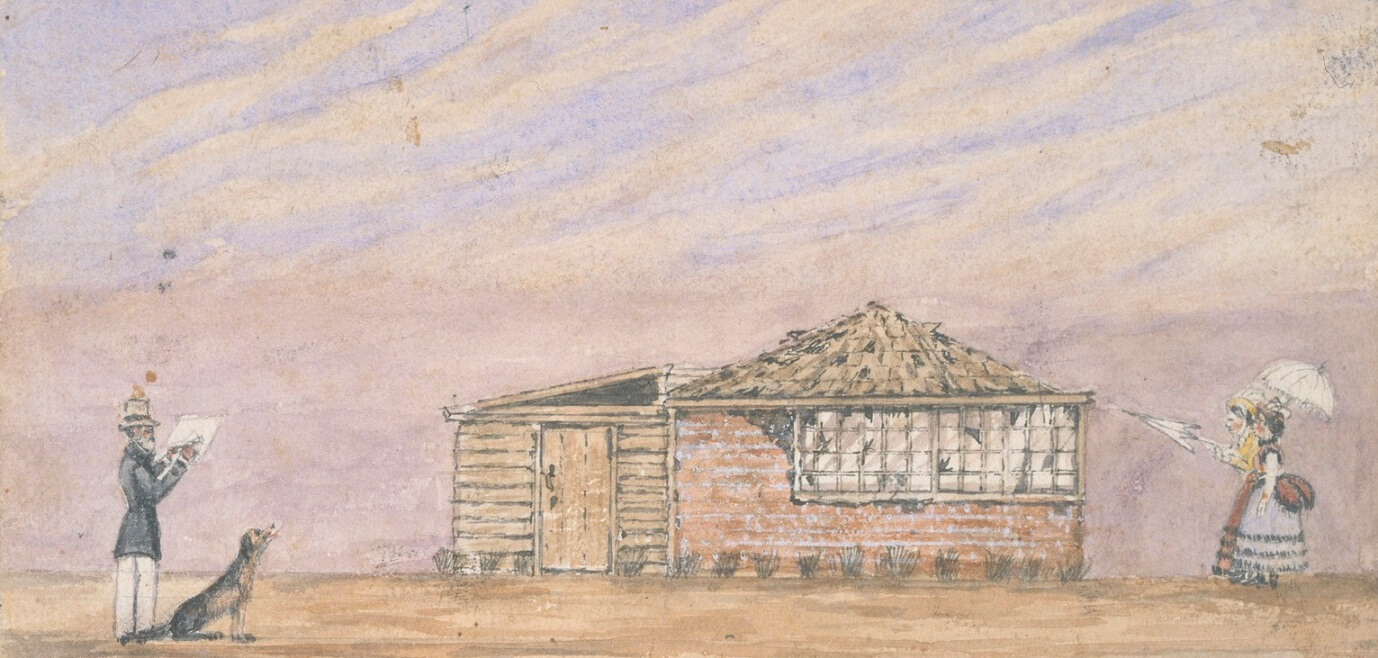‘Collins Street (From Queen Street)’ by Francois Cogné, artist, in the Melbourne Album, printed by Charles Troedel, 1863-64
Courtesy State Library Victoria
Lithography was invented in about 1798 by Bavarian playwright, Alois Senefelder, who discovered, by chance, a method to duplicate his scripts. He wrote with greasy crayon on slabs of limestone and printed them with rolled-on ink. The limestone retained the crayon marks allowing lithographs to be printed in almost unlimited quantities. Lithography became immensely popular in the nineteenth century, enabling mass production of illustrated images.
On display in Lost Jobs is the Melbourne Album, produced by celebrated lithographer Charles Troedel. Charles Troedel was born in Hamburg in 1835, becoming an apprentice lithographer to his father at age thirteen. In 1860 he arrived in Melbourne and set up a small lithographic printing business in Collins Street. Troedel produced work of the highest quality. His business produced a large majority of Australia’s early theatrical and advertising posters, product labels and other print ephemera.
The Melbourne Album was published in 1863 and was an immediate success. A compilation of 24 prints depicting Melbourne and its surrounds, it celebrated prosperous Gold-Rush Melbourne, with depictions of Collins Street’s substantial stone buildings, the grand Treasury and recently-opened Haymarket Theatre. Troedel used limestone imported from Bavaria to print the album, which was expensive, but high quality. His chief artist on the album was François Cogné, who produced 12 of the drawings. Nicholas Chevalier was another contributor. The album was well-received by the press and popular with the public who, with a monthly subscription, could purchase prints.
Fawkner’s first printing office, by W.F.E. Liardet, Melbourne, 1875
Reproduced courtesy State Library Victoria
John Pascoe Fawkner printed Melbourne's first newspaper, the Melbourne Advertiser, in May 1838 using a wooden hand printing press and type brought from Tasmania. By 1845 there were four newspaper printing offices and two job printers in Melbourne.


